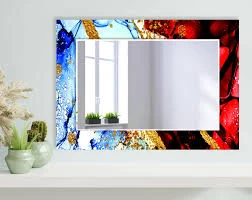

The Timeless Charm of Old Patterned Glass
Old patterned glass, often found adorning windows, jars, and decorative objects, carries with it a rich history and an aesthetic appeal that transcends modern glasswork. This unique material has been utilized for centuries, reflecting the artistry and craftsmanship of different eras. As environmental awareness grows and a longing for nostalgia flourishes in consumer preferences today, old patterned glass stands out as a celebrated relic of the past, blending practicality with beauty.
The journey of patterned glass began in ancient civilizations. The earliest evidence of glassmaking dates back to around 2000 B.C. in Mesopotamia, where artisans experimented with various techniques to create visually appealing objects. By the time the Romans embraced glassmaking around the first century A.D., patterns began to emerge. Techniques such as blowing, casting, and molding allowed artists to create intricate designs that delighted the eye and spoke of status and sophistication.
One of the most prominent styles of old patterned glass is the pressed glass that emerged in the 19th century. With the advent of the Industrial Revolution, glass production became more accessible. Factories began to produce patterned glass using molds, allowing for higher volumes at lower costs. This new technology led to the creation of an array of beautiful designs that adorned everything from serving dishes to lampshades. The introduction of colors and textures created depth, leading to exquisite pieces that graced household tables and furniture.
Victorian-era patterned glass is particularly celebrated for its ornate and complex designs. Patterns such as Cranberry Glass and Opalescent Glass captured the imagination of collectors and decorators alike. The influence of nature, geometry, and elaborate motifs became prevalent in these designs, making each piece not just a functional item but also a work of art. This glass often featured intricate patterns, including floral and geometric themes that enhanced its visual appeal.

As the 20th century approached, art movements such as Art Deco and Art Nouveau began to alter the landscape of glass design once again. These movements brought a new aesthetic sensibility to glassmaking, focusing on elegance and stylization. Patterned glass from this period often featured more streamlined shapes and bold colors, diverging from the complex traditional patterns. Unique surface textures, including etched designs and brilliant cut patterns, became popular among the affluent classes, embodying luxury and modernity.
Today, old patterned glass enjoys a renaissance, particularly in the realms of home decor and nostalgia-driven collectibles. Vintage markets, estate sales, and antique shops teem with these beautiful remnants of bygone eras. Collectors covet these unique pieces not only for their beauty but also for their connection to history. Each patterned glass item tells a story, reminding us of the craftsmanship that went into its creation and the lives it has touched over the years.
In addition to its decorative appeal, old patterned glass often plays a practical role in modern homes. Vintage glass jars, bowls, and vases are repurposed for contemporary use, bridging the gap between past and present. Their unique patterns can serve as conversation starters, inviting guests to appreciate their craftsmanship and history. Moreover, the sustainability aspect of reusing these items aligns perfectly with today’s environmental consciousness, making them not just beautiful but also responsible choices.
In conclusion, old patterned glass is more than just a relic of history; it is a testament to human creativity and craftsmanship. From its origins in ancient civilizations to the modern appreciation for vintage design, this unique material captures a timeless charm that resonates with people from all walks of life. As we continue to embrace the past and repurpose its treasures, old patterned glass will no doubt remain a cherished element of our homes and heritage, celebrating the artistry of those who came before us.